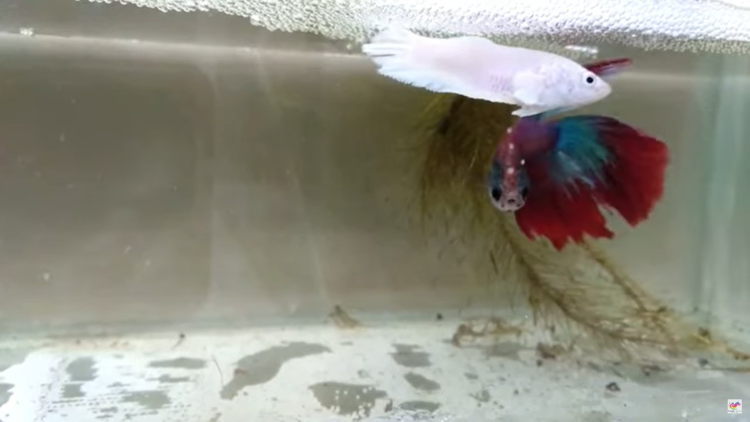Breeding Betta Fish: Basics you should know before next breeding setup
- Jun 25, 2023
- Anshika Mishra
- 278 0 0

While breeding Beta fish can be an exciting hobby, understanding the breeding process is crucial to maximizing your chances of success.
In this article, we'll explain the ins and outs of breeding Beta fish, including everything from selecting your breeding pairs to caring for your newly born fry.
Betta fish, also known as Siamese fighting fish, are popular aquarium fishes known for their vibrant colors and fins. Breeding these fishes is a relatively complex process that requires careful planning and preparation.
Selecting Breeding Pair
Breeding Betta starts with selecting your breeding pair. It's essential to choose healthy mature fishes free of illnesses and genetic defects. Look for fishes that are:
- active
- responsive
- bright color
- flowing
Make sure that the Betta has no fin rott, which looks like fuzzy fins with red tips. Selecting healthy Betta pair is the key to success, especially for male Betta fish that requires a lot of care.
Tank Setup
Once you've selected your breeding pair, it's time to select the breeding tank; betta fish are known for their aggression, so it's crucial to have a large enough tank to keep them separated during breeding.
A 10-gallon tank will give the female fish enough room to run around if the male is aggressive. Fill the tank with clean water and provide hiding places for the female Betta. It's recommended to keep the water level low when breeding them, as the male needs to swim up the bubble nest.
Conditioning Betta Fish
By reducing the water level, you can minimize the effort and conserve its energy. Before starting the process, it's important to condition them for breeding. This includes feeding them a high-protein diet and increasing the water temperature to simulate their natural habitat.
After 2-3 days of conditioning, introduce the male Betta to the breeding tank. This will help the male settle down in the tan and build a bubble nest. Once the male is in the tank, introduce the female with a glass separator with a small bottle inside the tank.
Breeding the Betta
This will allow the male Betta to check the female and get ready for breeding while also reducing tank aggression.
After a few hours, the male will start creating a bubble nest in the tank. Once the male has built the bubble nest, introduce the pair by removing the glass separator.
It's common for the male to attack the female at this point. Keep a close eye on the pair and look out for excessive aggression. If the aggression continues even after a few hours, remove the male and try again later.
If the male accepts the female, he will be excited to show his bubble nest to the female. At this point, the female will show interest in mating. Once they get the proximity, the male wraps the female triggering her to release eggs and the male to release milt around it.
Male betta watches the eggs for days before catching them. Even after they hatch, the father defecates them until they leave the nest.
If the male becomes stressed, it might eat the eggs resulting in betta breeding failure.
Remove the females once they have laid the eggs. The male betta will then care for the eggs, protecting them and keeping them warm constantly. After a few days, the eggs will hatch the fry will leave the nest.
At this point, remove the male betta from the tank to prevent it from eating the fry. The fry needs to be fed small amounts of feed several times a day. Ensure to keep the tank water clean and well-oxygenated.






About author